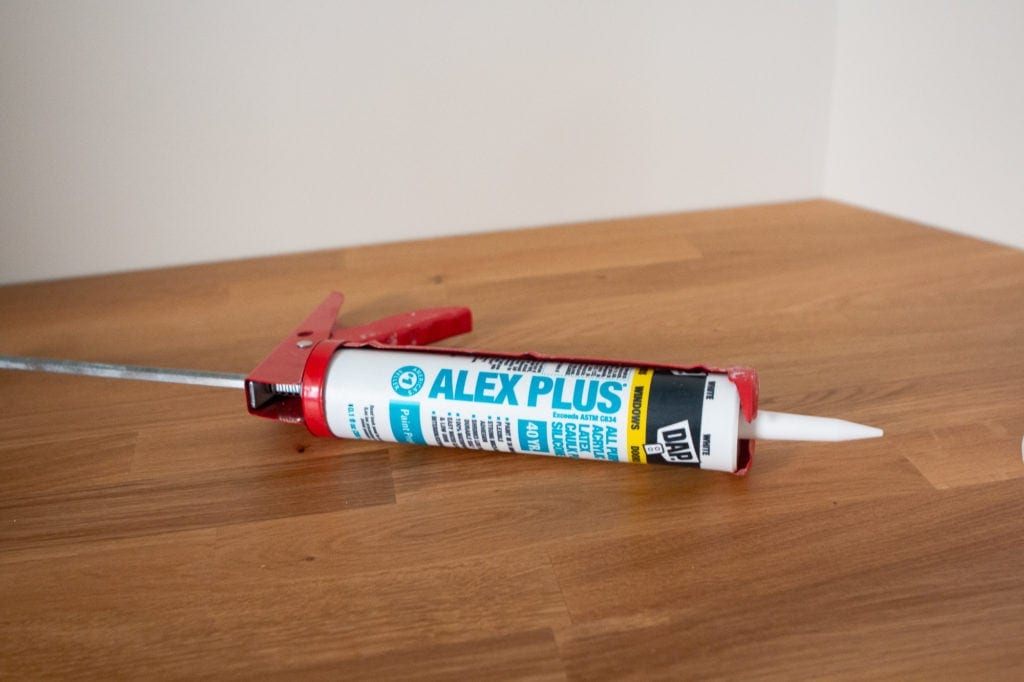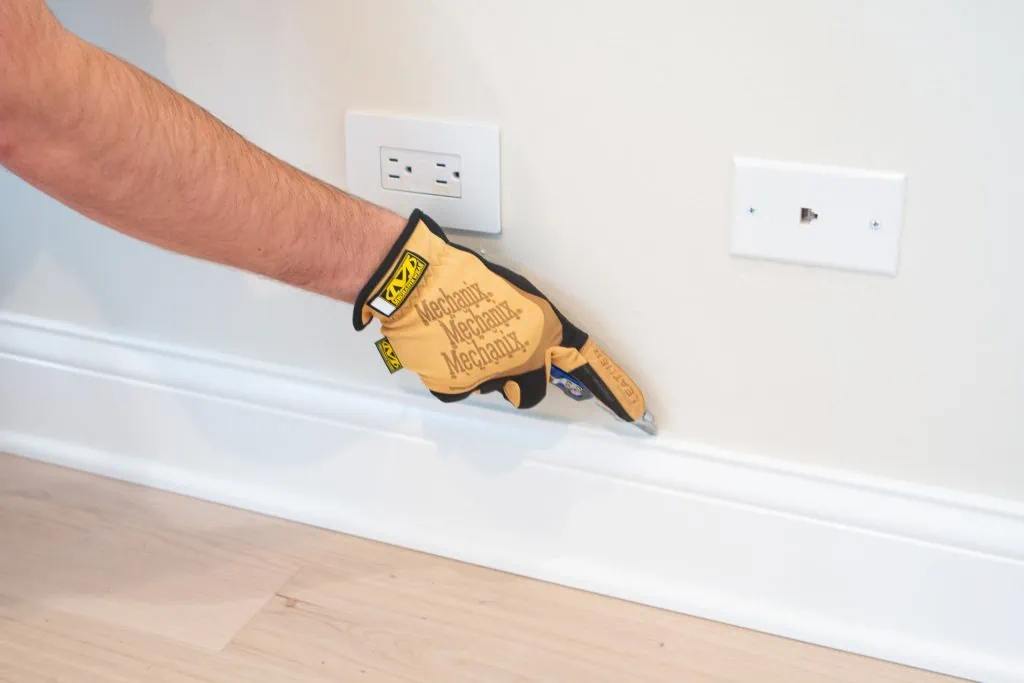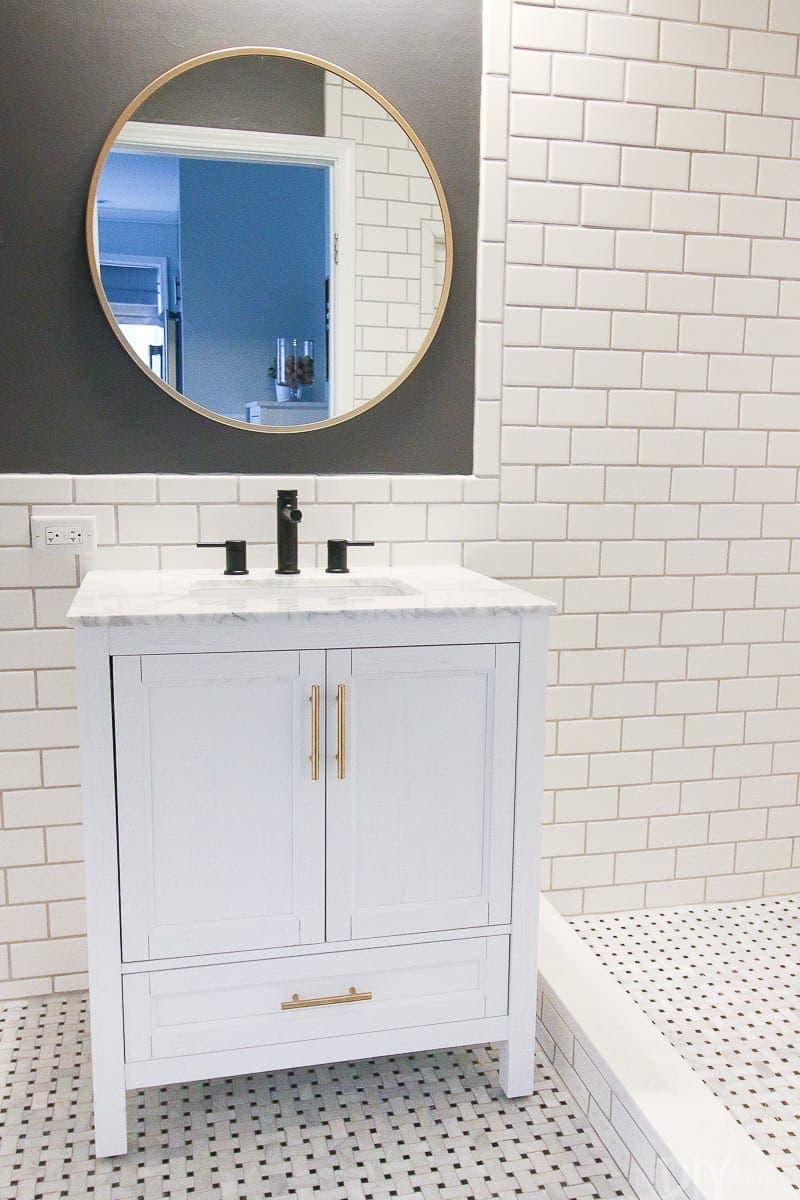Caulk 101: My Best Caulking Tips For Your Next DIY Project
Most DIY projects I do involve caulk and whenever I share myself using this essential supply, I’m bombarded with questions. What kind should you use? When do you need it? Any caulking tips for a great application? Can you caulk over caulk? What’s the difference between silicone and latex? I thought it was about time that I devoted an entire blog post to all things caulk.

And yes, we’re just gonna have to get over the fact that I’m going to say the word “caulk” about 100 times during this post. I posted this video on TikTok and was bombarded with comments from silly men who thought it was hilarious that I said this word so many times. Ugh. Let’s get over the misogyny and learn more about this home essential!
What Is Caulk & When Should You Use It?

Caulk is a flexible material that is used to seal joints between building materials, like wood, tile, windows, doors, etc. When it comes to the home, it’s an essential tool that is used in just about every single space. It comes in a tube and you usually use a caulk gun to get the material out and into the joint.

If you live in a colder climate, you may notice gaps come and go in the millwork around your home and around windows and doors. Your home is always moving, settling, and shrinking/expanding from humidity. Because of this, gaps can happen and the best way to remedy these is with caulk.

But, it’s also an essential tool for new projects too! When it comes to woodworking, you want to caulk every seam where the wood meets a new plane. I’m talking about the top of a baseboard, the corners where two pieces meet, the edges of the casing, etc. Caulking is actually one of my favorite parts of a project because it gives every space a finished look and it hides imperfections. Seams and any bad cuts disappear!

Whenever I’m in the midst of a woodworking project (like my recent beadboard DIY), I always joke that “caulk will save me.” And that’s because if I make a cut that isn’t 100% perfect, I can easily hide the seam with caulk and paint. It’s like magic!
Silicone Caulk vs. Acrylic Latex Caulk

There are two main kinds of caulk – acrylic and silicone.

Silicone Caulk: For a project that needs to be waterproofed, like a bathroom, kitchen, or exterior project, silicone caulk is the way to go. Here’s a tutorial for a kitchen backsplash and another to re-caulk your bathtub. Silicone caulk is not paintable, but it comes in various colors, along with clear. It is harder to work with than acrylic and it can get messy!
Acrylic Latex Caulk: This is what you use when dealing with wood. It can be used on baseboards, door casings, and for wood wall treatments. It typically comes in the color white and should be painted after it’s applied.
Caulking Supplies

If you’re going to do a caulking project, here are a few things you might want to have on hand…
- My Fave Acrylic Latex Caulk
- My Fave Silicone Caulk
- Caulk Gun
- Baby Wipes
- Painter’s Tape (for silicone caulk)
- Backer Rod
- Caulk Saver Cap
- Caulk Removal Tool
Caulk 101: My Best Application Tips

- Some caulk tubes need to be pierced inside the nozzle to open them. You can use the caulk gun for this as it has a pointy thing on it and you just stick that in the hole to break the seal of the tube.
- Most caulk guns have a tool built on them to cut the tube. It’s the little hole right by the trigger. Put the caulk tip in there, clamp it down, and it cuts it for you! No scissors are needed.
- If you look closely, there are measurements right on the nozzle of most brands of caulk based on how thick you want your caulk line to be. I like to cut to the 1/4-inch mark.
- Use baby wipes! They are my secret weapon when it comes to caulking. I work in three to five-foot sections and keep the caulk gun moving, while I place a finger with a baby wipe right behind that bead of caulk. It smooths it down and the wetness prevents the caulk from pulling up or sticking to you.

- If you’re using silicone caulk, you will want to use painter’s tape. Apply it above and below the area you need to caulk. Apply the caulk, wipe with a baby wipe, and then remove the painter’s tape immediately. If you wait too long, it may peel the caulk up right along with it.
Quick FAQs About Caulk
Can you caulk over grout?

One of the biggest tiling mistakes I see is when people use grout instead of caulk where two planes meet – like corners, where tub meets the tile, or where backsplash meets the countertop. These are areas that are always shifting and the grout will inevitably crumble! You want to remove the old grout and scrape it away. Then, if it’s a bathroom or kitchen, use silicone caulk to replace the grout. So, nope, don’t caulk over grout!
What caulk should you use when tiling?

You will likely want to use silicone caulk that matches the color of your grout. Most tile stores carry a wide variety of caulk colors to match your grout. They even sell it in sanded and unsanded, so you can match the look of the grout exactly! For example, if you’re tiling a bathroom floor you would want to use caulk on the edges of the bathroom where it meets the wall, tub, vanity, toilet, etc.
How long will an open tube last?

I highly recommend getting these caulk caps to save your opened caulk. I like having an opened tube of acrylic latex caulk on hand so I can easily make touch-ups around the house. I’ve had opened tubes last for more than six months with the use of these $3 caps!
Do you need to caulk where the baseboard meets the floor?
I don’t, but you can if there are unsightly gaps. Instead, I caulk the top of the baseboard where it meets the wall.
How can I recaulk a bathtub?

This blog post walks you through the full step-by-step for this easy DIY project!
When should I paint after caulking?

Read the instructions for your particular tube, but in general, I usually wait at least an hour.
Can you caulk over caulk?
When it comes to acrylic latex caulk, unless it’s in really bad shape, I usually just add more right on over. When it comes to silicone, I find it best to remove it first before applying fresh caulk.
What if I have a really big gap?
I swear by backer rod! You can jam this into the crevice and then caulk right over it, so the caulk has something to hold onto. Works like a charm.
Can caulk help with drafty windows and doors?
Yes! It can be used to seal indoor air gaps and prevent cold drafts from getting into your house.
Go Forth & Caulk!

I hope this caulk 101 post was helpful and that you’re feeling less intimidated by this simple home maintenance task. I hope to see many of you grabbing these supplies and fixing up the gaps around your home. It makes such a difference!







